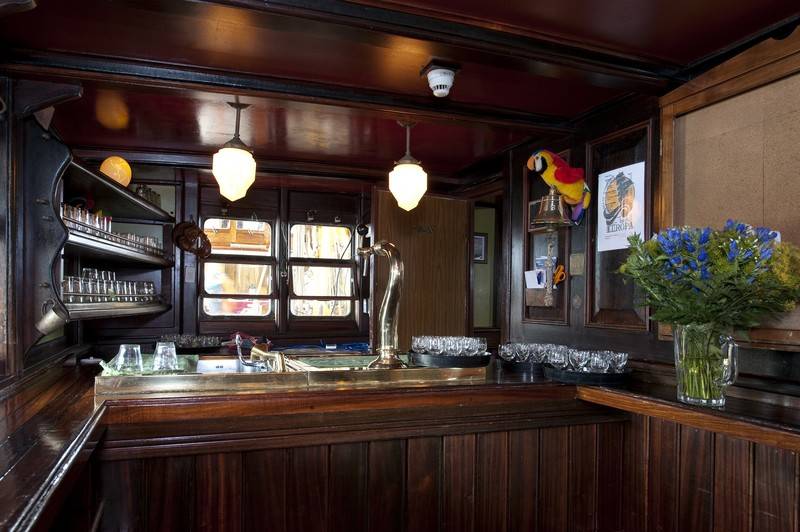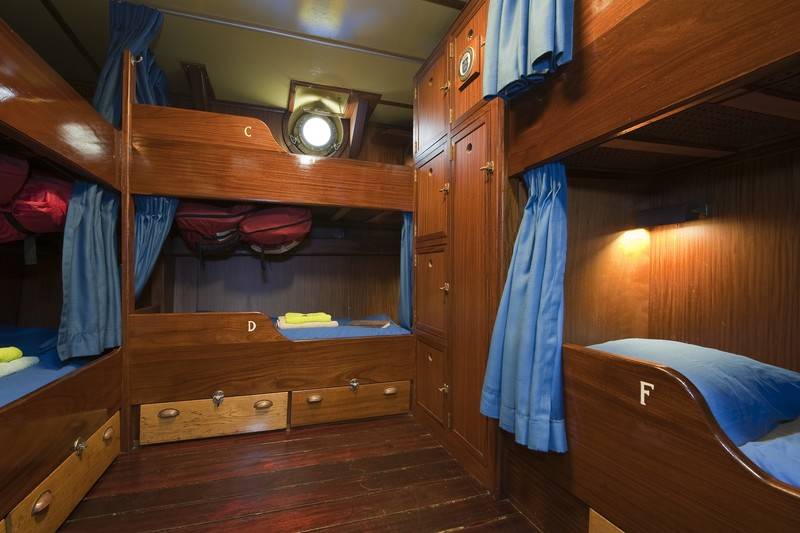BARK EUROPA
Many people who come on board struggle to believe the history of the hull of this classic three-master. The Special purpose sail training ship EUROPA was built in 1911. In 1994 she was fully restored as a barque (three mast rigged ship) and now roams the seas of the world in the best seafaring tradition. With a professional crew of maximum 14 and a complement of 48 voyage crew members of different ages and nationalities, EUROPA is powered by canvas and co-operation. The crew makes sure the ship operates safely. The atmosphere on board reflects an adventurous maritime history. The traditional mahogany deckhouse, teakwood decks and floors as well as the beautiful interior with authentic early 20th century details provide a perfect ambiance for a fantastic voyage.
Everyone is welcome to take the helm, set sails, assist with manoeuvres, navigation, weather observations, furling the sails on the yards and much more. The permanent crew will give lectures and instruct you during the voyage in steering, navigation and line handling. This will be done in a “Dutch” style, so without yelling, blowing whistles and so on. Also, you will find no uniforms on the Bark EUROPA. Crossing the ocean properly with a square rigger under sail like the Bark EUROPA is a team effort, so we appreciate every input from the voyage crew. Sailing experience is not necessary. Instructions will be given in watch responsibilities, basic sail theory, line handling, steering and navigation. There is always something new to see or to learn from the crew, of the voyage crew or by our environment. For some of the guests sailing on board EUROPA feels like an escape from their daily routine. Think of a relaxing time without your phone and without internet. Without Google you turn to each other and books for information. Let the people onboard surprise you with their knowledge of very diverse subjects. Live in the moment and admire the wonder of nature. During a voyage on board you establish a routine that is relaxing and comfortable but keeps you occupied.
The ship is ideal for ocean crossings and longer voyages, with various places for relaxing: library, lounge, poker corner and deckhouse. These different areas allow you to do your own thing: perhaps some quiet reading or a more active role in the social life in the deckhouse. In the aft of the ship you have the Library. This is usually the most quit place of the ship so ideal to read a book or work on your own logbook. On tweendeck level you will find the Lounge. Breakfast is served here but this room also is used by the guides to have their lectures and show their movies. In the deckhouse you will find the ships Bar with the nice benches to meet your fellow crew and toast on another wonderful day.
There are four 2-person cabins, four 4-person cabins and four 6-person cabins. The classic romantic bunks are very comfortable. All cabins are provided with ensuite shower and toilet. There are 12 cabins, of which four are 2 person cabins, four are 4-person cabins and four are 6 person cabins.



















